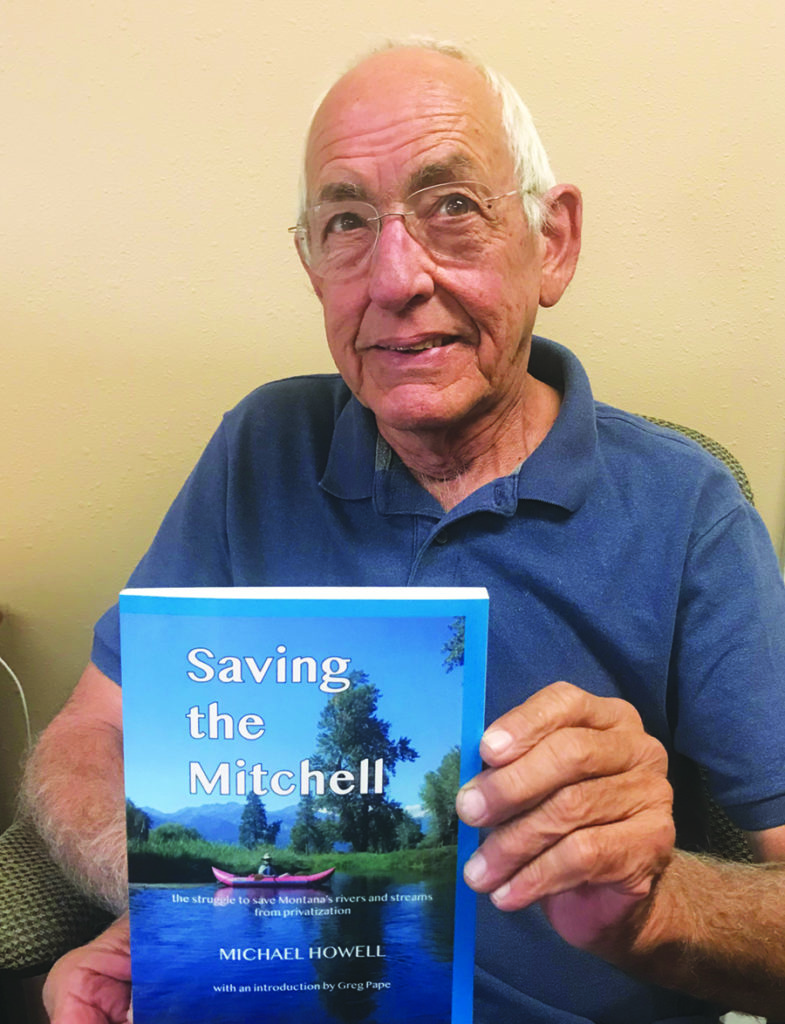
Saving the Mitchell is a non-fiction book recently released by Stoneydale Press of Stevensville. The book was authored by Michael Howell, who for the past 35 years worked as the publisher of a community newspaper located in Stevensville. Howell spent 10 years of those years in a legal battle to save a branch of the Bitterroot River from privatization by a group of wealthy landowners who wanted it for their own private fishing paradise.
The Mitchell Slough, originally known as the Right Fork of the St. Mary’s Fork of the Bitterroot River, is a 16-mile-long spring-fed stretch of the Bitterroot River that meanders from just north of Corvallis to just south of Stevensville. In the early-90’s two young men, who had fished the waters of the Mitchell all their lives, decided to test Montana’s Stream Access Law by fishing in this area that had been closed to the public by landowners who put up barbed wire and “No Trespassing” signs along its banks.
Newspaper publisher Howell got involved when the two men came to him and asked for some publicity about the issue. Howell wrote some articles about an incident in which the two were cited for trespassing and later acquitted and that is the beginning of a fascinating saga of the fight to save Montana’s rivers and streams from privatization. The fight involved numerous legal complexities that were ably sorted out and addressed masterfully by the late Jack Tuholske, the legendary environmental attorney to whom the book is dedicated.
“No one else could have told this story with as much clarity, accuracy and insightful nuance as Michael Howell has done,” writes Greg Pape in the Introduction. “If the news is a rough draft of history, then Michael’s work over the years as a reporter has helped produce that rough draft. But Saving the Mitchell is not a rough draft. It is a clarification, a well-written and well-vetted true story, a book that will take its place among the significant books of Montana history and literature. It is also a reminder of the vigilance that is necessary to good citizenship.”
The poetry of Greg Pape, a former Poet Laureate of Montana, is sprinkled throughout the 145-page book, which also contains a number of photos, maps and other related material. The book retails for $19.95 and can be purchased by contacting Michael Howell directly at michaelonburntfork@gmail.com, at Stoneydale Press, 777-2521, or at Browsing Bison Bookstore in Stevensville, Chapter One Bookstore in Hamilton and Fact & Fiction Bookstore in Missoula.
You can also buy the book now by clicking the PayPal button below.
